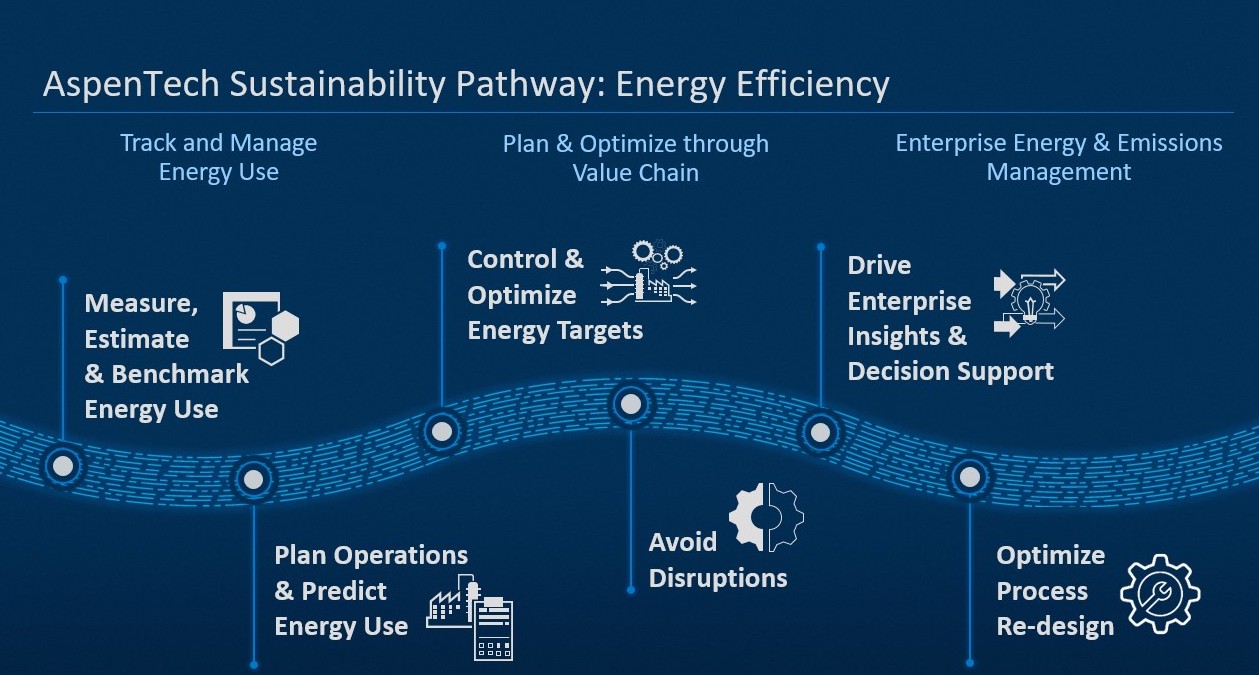In early January, Microsoft announced changes to help end users make choices to reduce their environmental impact while using its products. This highlights the fact that Microsoft is focusing on energy efficiency as a key pathway to reach its carbon-negative commitments by 2030 across the entire value chain.
Like Microsoft, asset-intensive industries also have environmental commitments and acknowledge that energy efficiency is a very important part of the solution to reach targets. With demand increasing globally in the next decade, energy and chemical companies are facing a dual challenge: meeting the needs of a higher standard of living for a rapidly growing population while achieving sustainability and profitability goals. This becomes more relevant today, especially in the face of geopolitical conflicts that have impacted the entire industry.
As Vikas Dhole, General Manager of Sustainability at AspenTech explained in his most recent blog, AspenTech created structured solutions packages – known as Sustainability Pathways – to help asset-intensive industries strategically meet sustainability targets across the most impactful areas.
The Energy Efficiency Sustainability Pathway provides guidance on how the AspenTech portfolio supports the development of a digital strategy to improve energy efficiency quickly and easily throughout operations—in the main process and the utility side – and across the entire value chain.

AspenTech developed this pathway using the leading solutions that have been enabling energy efficiency over the past several decades across the industry and are a reference in driving sustainability through digitalization. Here are a few examples:
- Middle East Oil & Gas major ADNOC improved energy by 10% through increased visibility of key energy demand, sources and trends using a set of AspenTech products that include leading process simulator Aspen HYSYS®, as well as solutions for process historian and data visualization, mass balance reconciliation and utilities planning.
- Advanced process control (APC) has been used in the process industries for decades to improve process efficiency. AspenTech’s APC solution learns from the historic performance of the plant and helps to stabilize operations and improve energy efficiency in a fraction of the time, without additional CAPEX. An example of this is Braskem, which reduced energy use by 20% in an ethylene plant just two weeks after deploying AspenTech’s APC solution.
- SABIC developed a utility digital twin model in one of its sites in the Middle East using Aspen Utilities Planner™. The model determined energy losses at the equipment level and performed overall utility system optimization to maximize energy gains. The improvement opportunities resulted in 130GJ/hour savings in energy usage.
- AspenTech solutions help to remove bottlenecks and identify site-wide opportunities to improve energy efficiency. LG Chem used Aspen Plus® and Aspen Energy Analyzer™ to identify energy-savings opportunities in their 900Kton/year ethylene plant in Daesan, Korea. After reviewing commercial and operational feasibility, the selected alternatives resulted in a 3 to 4% overall plant energy reduction, with an estimated $10M USD/year in additional profits.
The Energy Efficiency Sustainability Pathway reflects AspenTech’s domain expertise and our track record of success in helping asset-intensive industries for over 40 years. As companies in different industries worldwide are looking at reducing their carbon footprint through energy optimization, AspenTech provides the right tools to support them on the energy efficiency journey to achieve sustainability goals. Stay tuned for more information on our other pathways!




Leave A Comment